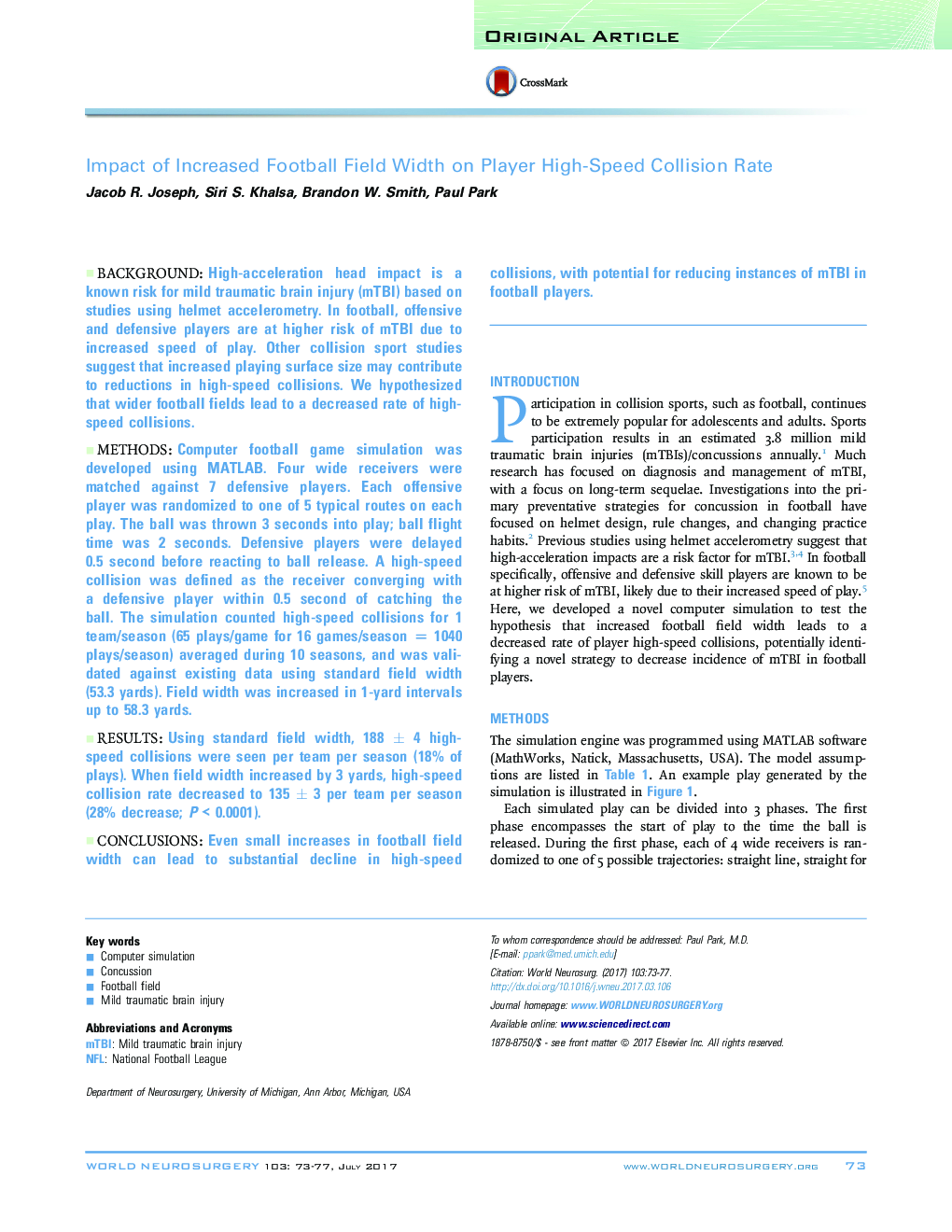| Article ID | Journal | Published Year | Pages | File Type |
|---|---|---|---|---|
| 5634288 | World Neurosurgery | 2017 | 5 Pages |
BackgroundHigh-acceleration head impact is a known risk for mild traumatic brain injury (mTBI) based on studies using helmet accelerometry. In football, offensive and defensive players are at higher risk of mTBI due to increased speed of play. Other collision sport studies suggest that increased playing surface size may contribute to reductions in high-speed collisions. We hypothesized that wider football fields lead to a decreased rate of high-speed collisions.MethodsComputer football game simulation was developed using MATLAB. Four wide receivers were matched against 7 defensive players. Each offensive player was randomized to one of 5 typical routes on each play. The ball was thrown 3 seconds into play; ball flight time was 2 seconds. Defensive players were delayed 0.5 second before reacting to ball release. A high-speed collision was defined as the receiver converging with a defensive player within 0.5 second of catching the ball. The simulation counted high-speed collisions for 1 team/season (65 plays/game for 16 games/season = 1040 plays/season) averaged during 10 seasons, and was validated against existing data using standard field width (53.3 yards). Field width was increased in 1-yard intervals up to 58.3 yards.ResultsUsing standard field width, 188 ± 4 high-speed collisions were seen per team per season (18% of plays). When field width increased by 3 yards, high-speed collision rate decreased to 135 ± 3 per team per season (28% decrease; P < 0.0001).ConclusionsEven small increases in football field width can lead to substantial decline in high-speed collisions, with potential for reducing instances of mTBI in football players.
